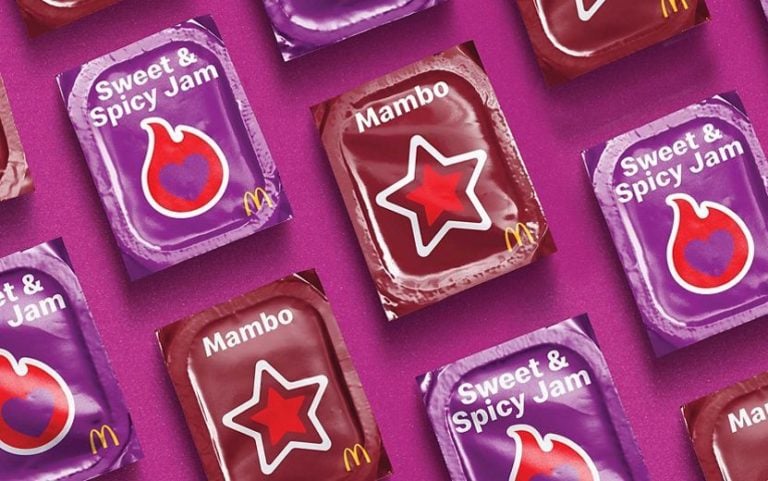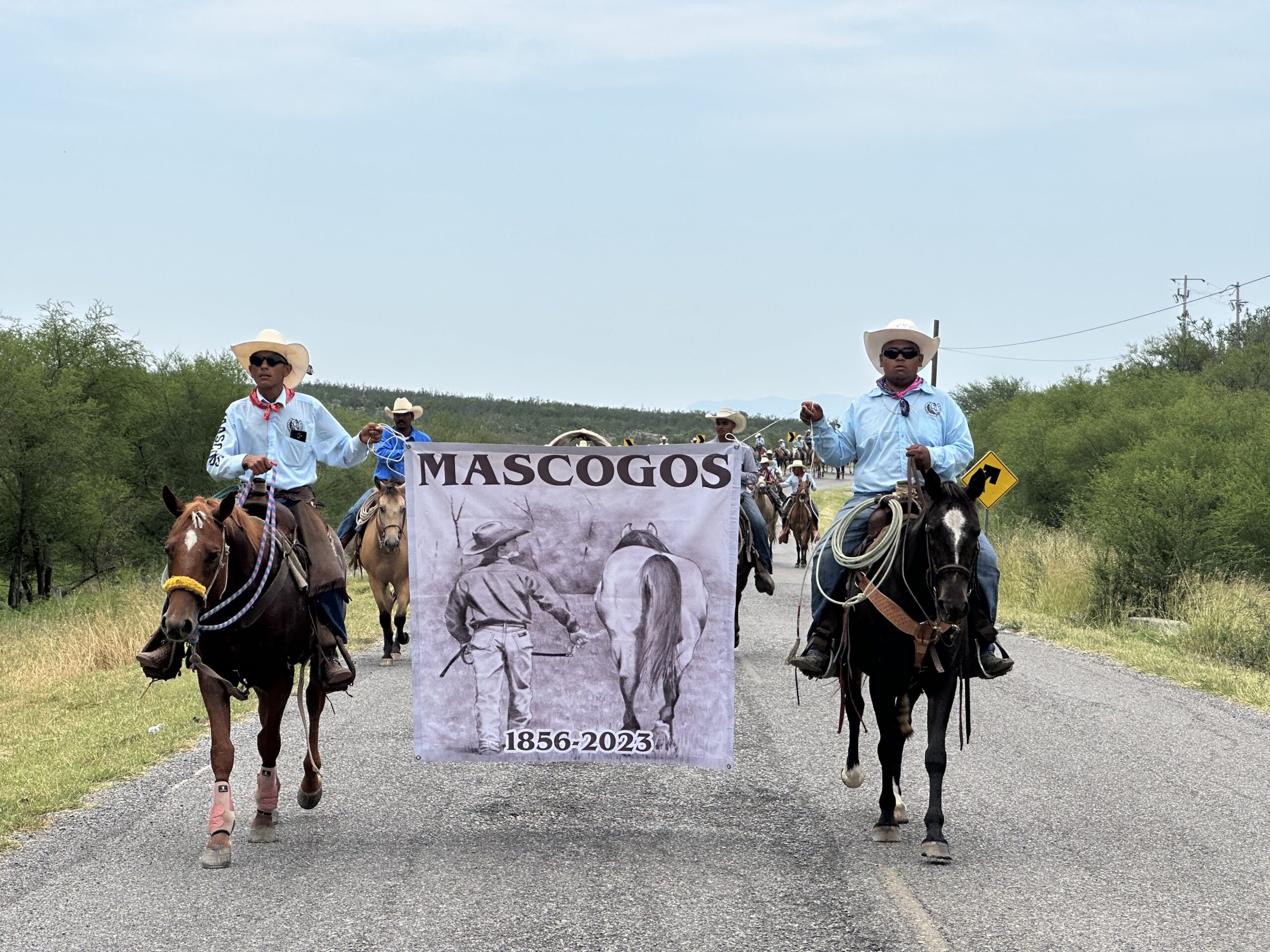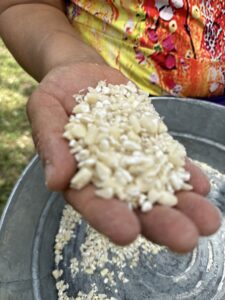You are using an out of date browser. It may not display this or other websites correctly.
You should upgrade or use an alternative browser.
You should upgrade or use an alternative browser.
High on the Hog: A Culinary Journey from Africa to America
- Thread starter get these nets
- Start date
More options
Who Replied?get these nets
Veteran
Sept 2023

Chef JJ Johnson's new cookbook celebrates rice, the humble grain that feeds the world
Chef JJ Johnson uses rice at home in many different ways — making crepes with his kids, using leftover rice for his wife’s lunch salad and frying it for dinner multiple ways
get these nets
Veteran
*Mini-doc.
Sept 28, 2023
 McDonald’s releases two new sauces next month.
McDonald’s releases two new sauces next month.
.
McDonald’s unleashes a limited-edition spin on D.C.’s popular mumbo sauce on Monday, October 9.
McDonald’s tapped D.C. chef Jerome Grant, a 3-year member of the chain’s culinary council, to help develop the dipper dubbed Mambo Sauce. Citywide carryouts slather the red-orange sticky condiment over chicken and fries, so it should come as no surprise the McNugget conglomerate wants to too. Mumbo sauce can be compared to barbecue sauce, but a little sweeter, spicier, or more sour.
“Mumbo sauce, something that is very nostalgic in my D.C. upbringing, was one concept that the council was interested in, so I took the role as their partner in the process of bringing this rich sauce tradition to diners in the U.S.,” says Grant, who was named one of 16 Black chefs changing food in America by the New York Times.
As locals wait to taste test the McDonald’s version for themself, the initial point of contention online seems to be the fact they fudged the name. “First of all it “Mumbo” not “Mambo”. Real #DcNatives know this,” writes @stl_miaggi. (The spelling snafu could have to do with legal issues; in the late 1950s, a Black man named Argia B. Collins registered a trademark for Argia B’s Mumbo Sauce. In 2011, the owner of Capital City Mambo Sauce tried to have that voided but lost the battle in court.)
McDonald’s drops an additional sauce nationwide the same day. Sweet & Spicy Jam, finished with apple cider vinegar, promises a “tongue-numbing Szechuan peppercorn kick” and extra heat from cayenne. Billed as its “first-ever breakfast-inspired dipping sauce,” diners are encouraged to dunk it with a Sausage McMuffin or handheld hash browns. McDonald’s suggests dialing up its Quarter Pounder, McNuggets, McCrispy, fries — or whatever — with the Mambo Sauce.
“Sweet & Spicy Jam and Mambo Sauce live at the intersection of flavor and culture — pulling from decades of rich food history and tradition in local restaurants and home kitchens,” says Tariq Hassan, chief marketing and customer experience officer at McDonald’s USA, in a statement.
McDonald’s hired food content creators to review the incoming dips on their social media channels.
A documentary debuting on McDonald’s YouTube channel the same day will showcase “real stories of the sauce makers, restaurateurs, small business owners and fans keeping the culture of Mambo strong,” per a press release. D.C. proper is home to 30 McDonald’s.
McDonald’s Will Offer Mumbo Sauce For A Limited Time Next Month
Sept 28, 2023

.
McDonald’s unleashes a limited-edition spin on D.C.’s popular mumbo sauce on Monday, October 9.
McDonald’s tapped D.C. chef Jerome Grant, a 3-year member of the chain’s culinary council, to help develop the dipper dubbed Mambo Sauce. Citywide carryouts slather the red-orange sticky condiment over chicken and fries, so it should come as no surprise the McNugget conglomerate wants to too. Mumbo sauce can be compared to barbecue sauce, but a little sweeter, spicier, or more sour.
“Mumbo sauce, something that is very nostalgic in my D.C. upbringing, was one concept that the council was interested in, so I took the role as their partner in the process of bringing this rich sauce tradition to diners in the U.S.,” says Grant, who was named one of 16 Black chefs changing food in America by the New York Times.
As locals wait to taste test the McDonald’s version for themself, the initial point of contention online seems to be the fact they fudged the name. “First of all it “Mumbo” not “Mambo”. Real #DcNatives know this,” writes @stl_miaggi. (The spelling snafu could have to do with legal issues; in the late 1950s, a Black man named Argia B. Collins registered a trademark for Argia B’s Mumbo Sauce. In 2011, the owner of Capital City Mambo Sauce tried to have that voided but lost the battle in court.)
McDonald’s drops an additional sauce nationwide the same day. Sweet & Spicy Jam, finished with apple cider vinegar, promises a “tongue-numbing Szechuan peppercorn kick” and extra heat from cayenne. Billed as its “first-ever breakfast-inspired dipping sauce,” diners are encouraged to dunk it with a Sausage McMuffin or handheld hash browns. McDonald’s suggests dialing up its Quarter Pounder, McNuggets, McCrispy, fries — or whatever — with the Mambo Sauce.
“Sweet & Spicy Jam and Mambo Sauce live at the intersection of flavor and culture — pulling from decades of rich food history and tradition in local restaurants and home kitchens,” says Tariq Hassan, chief marketing and customer experience officer at McDonald’s USA, in a statement.
McDonald’s hired food content creators to review the incoming dips on their social media channels.
A documentary debuting on McDonald’s YouTube channel the same day will showcase “real stories of the sauce makers, restaurateurs, small business owners and fans keeping the culture of Mambo strong,” per a press release. D.C. proper is home to 30 McDonald’s.
Last edited:
get these nets
Veteran
get these nets
Veteran
Oct 13, 2023

Chicago's oldest Black-owned soul food restaurant celebrates 50 years
A South Side eatery is celebrating 50 years in business. They're believed to be the oldest running Black-owned soul food restaurant in Chicago.
get these nets
Veteran
Nike teams up with Slim & Husky’s owners for special release honoring Tennessee State University
get these nets
Veteran
Mortimer, we're BACK !!!!!!!!!
get these nets
Veteran
*trivia questions asked at

The Blackest Questions
Celebrity Chef Jernard Wells, host of Cleo TV’s New Soul Kitchen, talks about some of his favorite meals and shares secrets about his southern cooking style. He also reflects on pivotal moments in his career that shaped his success, including cooking for Tyler Perry and curating a supper club at The Historic Hampton House
*trivia questions asked @ 1:35, 8:34 *, 19:07, 23:33, 29:17
Lightning Round at 33:50
*
Lightning Round at 33:50
*

The Blackest Questions
Good Laughs and Great Eats with Chef Jernard Wells
Episode 48Celebrity Chef Jernard Wells, host of Cleo TV’s New Soul Kitchen, talks about some of his favorite meals and shares secrets about his southern cooking style. He also reflects on pivotal moments in his career that shaped his success, including cooking for Tyler Perry and curating a supper club at The Historic Hampton House
Last edited:
get these nets
Veteran

HEINZ® and World-Renowned Chef Marcus Samuelsson Elevate Up-and-Coming Black Chefs with New ‘Open Kitchen’ Series
PITTSBURGH & CHICAGO, November 13, 2023--HEINZ® announces today Open Kitchen, a new event series from the brand’s Black Kitchen Initiative. Kicking off in partnership with world-renowned chef, Marcus Samuelsson, past and current Black Kitchen Initiative grantees will take over restaurant...
get these nets
Veteran
get these nets
Veteran
N.C. A&T Breaks Ground on Urban and Community Food Complex
EAST GREENSBORO, N.C. (Nov. 14, 2023) – North Carolina Agricultural and Technical State University leaders, elected officials, faculty, staff and project team members picked up shovels and officially broke ground on the Urban and Community Food Complex, the latest expansion of the 492-acre University Farm.
N.C. A&T Chancellor Harold L. Martin Sr., N.C. Sen. Gladys Robinson, Greensboro City Councilman Hugh Holston, A&T Board of Trustees Chair Kim Gatling and Venu Kalavacharla, Ph.D., a deputy director from the U.S. Department of Agriculture’s National Institute of Food and Agriculture, joined interim College of Agriculture and Environmental Sciences Dean Shirley Hymon-Parker, interim farm superintendent Daniel Cooper, Provost and Executive Vice Chancellor of Academic Affairs Tonya Smith-Jackson and other university leaders for the event.
“This new facility is expected to assist East Greensboro’s economic revival by spurring food and agribusiness entrepreneurship,” said Martin. “There needs to be a driver for promoting access to nutritious, fresh food the East Greensboro area. As the largest college of agriculture at the nation’s largest HBCU (historically Black college or university), we have a responsibility to be that driver.”
The complex, which has been planned for more than 15 years, is designed to be part small business incubator, part research and engagement facility, said Hymon-Parker.
“In this building, food entrepreneurs will be able to research and test their business ideas with assistance from the college faculty and Cooperative Extension specialists,” she said. “Students will be able to learn from an integrated curriculum, spanning Animal Science, Food and Nutritional Science to Agribusiness. The complex will expand the college’s capabilities in all three mission areas: research, teaching and outreach.”
Robinson, whose district includes Guilford County, and Holston praised the farm’s reach as a research and teaching facility and noted its potential as an economic driver for East Greensboro.
“This is so important,” said Robinson. “This whole plot of land – the Pavilion, the student and community farm, the research complex – adds value, not only to N.C. A&T and the city of Greensboro, but to the state of North Carolina.”
Included in the $12 million, nearly 15,000-square-foot building will be a sensory lab for conducting consumer research; a post-harvest physiology lab for examining harvested products; a food processing lab, a commercial kitchen, and a food safety lab. Blue Cross and Blue Shield Endowed Professor Hao Feng, Ph.D., will direct the facility.
But its standout feature will be a creamery, allowing the farm to produce Aggie Ice Cream for the first time since the 1960s, when the University Farm produced much of the food served on campus.
“We’re the last HBCU with a dairy,” Hymon-Parker said. “Our A2A2 Jersey cows produce milk that is more easily tolerated, and using their milk, we will bring back Aggie Ice Cream, the ultimate sweet treat, for sale and for visitors. Our students will help shape the product, designing flavors and packaging.”
Set to open in 2025, the facility is the fourth in a series of projects designed to provide greater community access, student participation and faculty utility at the farm, which supports research projects, teaching and outreach, through A&T’s division of N.C. Cooperative Extension.
Previous projects included the Student Farm, the Community Farm and the $6 million University Farm Pavilion, which opened in 2021.
“I have dreamed of a facility like this,” said Kalavacharla. “And with your leadership, dean and chancellor, it has happened here.”
get these nets
Veteran

The 50 Most Powerful People in American Fine Dining
Robb Report’s first annual ranking of the restaurant industry’s most influential figures, as chosen by their peers.
November 13, 2023
The 50 Most Powerful People in American Fine Dining
Robb Report's first annual ranking of the restaurant industry's most influential figures, as chosen by their peers.
In the world of fine dining, where creativity and commerce intermingle heavily, power is fluid. The ability to influence others may come from economic might, but for many, vision and innovation are what imbue people with power. While there are numerous lists trying to pinpoint who in the industry holds sway over others, we felt the best way to truly understand influence in American fine dining was to go directly to professionals throughout the industry and ask them what they thought.
So we called on more than 100 people from across the restaurant world—from Michelin-starred chefs to James Beard Award-winning restaurateurs to prominent investors to media members to CEOs of restaurant tech platforms—to tell us who they believed were the most powerful among their peers. We asked voters to not define fine dining too narrowly—as just tasting menus and overly formal service—because for us fine dining is about ambition in the kitchen paired with attentive hospitality in the dining room. And we encouraged voters to be expansive in how they thought about who held power: Perhaps it’s the chefs who most influence others creatively; the restaurateurs growing dining empires; the investors working behind the scenes to fund top talent; the real estate developers that can attract great restaurant groups; or the media figures who can drive or deter business with their opinions. Ultimately, we wanted to know who moves the needle creatively and economically.
With those parameters in mind, each voter was allowed to select 10 people they thought held the most power in the industry. In the instance of a voter believing a duo or trio’s influence was inextricably linked, they were allowed to group them as one entry on their ballot. We sought gender, racial, age, and geographic diversity in our voting body to give the best possible snapshot of the restaurant world right now.
As ballots began to roll in, we saw that the old guard of the industry was still holding strong in the minds of many people, with the first few slots of numerous ballots looking surprisingly similar. And despite gender parity in our voting body, perceptions of who holds power in the industry still skews male, with the number of men on the list greatly outnumbering the women. But as voting continued, we could also see a new class of young, diverse leaders emerge, showing a bright future for fine dining.
Here are the 50 most powerful people in American fine dining for 2023.
45) Erick Williams

Photo : Gary Adcock/Studio37
The first Black chef to win the James Beard Award for Best Chef: Great Lakes, Erick Williams has become known for the Southern fine-dining experience he serves up at Chicago’s Virtue. Since that restaurant opened five years ago, Williams has been on a tear, launching three new concepts during the pandemic alone: Mustard Seed Kitchen, Daisy’s Po-Boy and Tavern, and Top This Mac N’ Cheese. The chef has used his skills in the kitchen to do good in his community, too, earning the Chicago mayor’s Medal of Honor for feeding frontline workers during the Covid-19 crisis and being a leading voice in the social-justice movement.
42) Mashama Bailey

Photo : Nydia Blas
In Savannah, Ga., Mashama Bailey and her business partner Johno Morisano have converted an old Greyhound Station built in the Jim Crow South into the Grey. Inside, Bailey cooks what she calls Port City Southern food, a cuisine that’s rooted in Southern ingredients but not closed off from the world that has passed through this old coastal town. Bailey draws on the meals she ate in her grandmother’s Georgia kitchen, along with training in New York and France. She has channeled the likes of Edna Lewis and has gone deep into the terroir and ingredients of the land around her. The result is a trip through cultures—like grits topped with foie gras, quail with creole sauce, and the Lowcountry rice dish perloo with okra. And she has become a public face of Southern fare with her own MasterClass and an episode of Chef’s Table devoted to her work. But she’s not staying just in the Peach State: Bailey has expanded to Austin and will open a restaurant in Paris, too.
27) Kwame Onwuachi

Photo : Andrew Bui
At just 33, Kwame Onwuachi may be one of the youngest people on our list, but then again, most of the people on this list haven’t had their hit memoir optioned by A24. Ever since Onwuachi made a star turn on Top Chef, the Per Se and Eleven Madison Park alum has had a spotlight on his career. Of course, the road was rocky early on. His first restaurant, the luxe Shaw Bijou in Washington, D.C., closed after just a few months. He came back strong, though, opening the hit Kith/Kin, a 96-seat restaurant where explored Afro-Caribbean cooking. His work there won him the James Beard Award for Rising Star Chef in 2019, but in the midst of the pandemic, he departed after three years. Eventually Onwuachi would make his way back to New York City where he opened Tatiana at Lincoln Center, one of the country’s most celebrated restaurant openings in the past year. He has charmed the Big Apple, creating a menu that explores the African diaspora while also cooking food that is a playful ode to his upbringing and the city.
get these nets
Veteran
The cross-border cultural heritage of Black Seminoles can be found in cuisine
Mascogos descended from Black Seminoles who escaped slavery in the U.S. While many live in Mexico, they still celebrate events like Juneteenth.
November 1, 2023
A procession in Nacimiento.
With origins in Galveston, Juneteenth – the federal holiday commemorating the end of slavery – has long been celebrated by Black Americans across Texas. The day engages with Black American culture, from historical reenactments to large cookouts. But Black Americans aren’t the only ones who celebrate Juneteenth. Taco journalist Mando Rayo was curious – what about Black Mexicans?
It makes sense. Before Texas was Texas, it was Mexico; before it was Mexico, it was – and still is – Indigenous land. “I think for me as a Latino, just thinking about the intersection between, you know, Mexicanos and Black and Indigenous populations and also like some of those things that we don’t like to talk about…” Rayo notes. “And through these stories, I hope that we can learn and go beyond what was taught to us.”
Mascogos are descendants of Black Seminoles who escaped from slavery in the mid-1800s and settled primarily in Coahuila, Mexico. After learning about this history, Rayo spent two episodes of Tacos of Texas tracing the history and foodways of Black Seminoles across the region.
“Black Seminole leader John Horse and about 180 Black Seminoles staged a mass escape in 1849 to northern Mexico, where slavery had been abolished 20 years earlier,” Rayo shares. “The Mexican government welcomed the Seminole allies as border guards on the frontier, and they settled in Nacimiento, Coahuila. I don’t know about you, but I wasn’t taught this in school.”
Rayo began learning the history of Black Seminoles with the help of Windy Goodloe and Corina Torralba Harrington of the Seminole Indian Scout Cemetery Association in Brackettville, Texas. Goodloe, the secretary of the Seminole Indian Scout Cemetery Association, has deep roots within the town of around 2,000 people. Though the population is sparse, Brackettville is revitalized when Juneteenth comes around.
“Juneteenth, for us, is different in a way,” Goodloe explains. “We celebrate Juneteenth in solidarity with our Black brethren, although we were already free. We understand because of the travels of the Black Seminole, we as a people understand what freedom means.”
For Goodloe, Juneteenth isn’t just about the cookouts or the parade – it’s about embracing the connection between her and her loved ones’ Black Seminole heritage. She tells the Tacos of Texas podcast that that connection tethers people between Brackettville and Nacimiento. “These are our kinfolk,” Goodloe expresses. “[You’re] immediately embraced.”
The next day, Rayo ventures south to Nacimiento in Coahuila, Mexico, to meet with Torralba, the treasurer of the Seminole Indian Scout Cemetery Association. Though she lives in San Antonio, every Juneteenth she returns to Nacimiento for what feels like a big reunion.
“We have people that live around in Múzquiz and around other little towns in Mexico that come into Nacimiento for the celebration,” Torralba recalls. The days are stacked – a cabalgata, a baile, and of course… food!

Corn used to make sofkee. Tacos of Texas
Rayo finds familiar flavors throughout the celebrations – frijole rancheros, empanadas de la calabacita, and even potato salad. One dish that exists both in Mexico and stateside is sofkee. Derived from the Creek word safke or osafke, sofkee is a white corn-based soup cooked with ash originating from the southeast United States, the recipe traveling with the Indigenous peoples. Sweet and a tiny bit grainy, Rayo’s first taste instantly transports him to childhood, spooning his grandmother’s arroz con leche on a cold day.
This is the kind of familiarity that weaves together Texas, Mexican, and Seminole cuisines.
“Black Seminoles here in Nacimiento are really kind of holding onto their roots,” Rayo says. “Even though they may not know the dates or how the celebration came to be, they have that pride in being negros mascogos.”
get these nets
Veteran